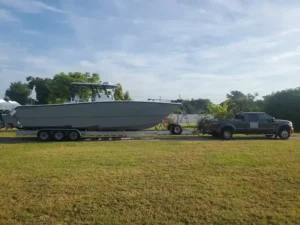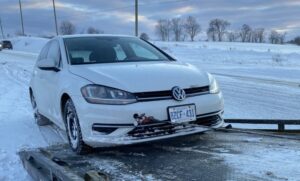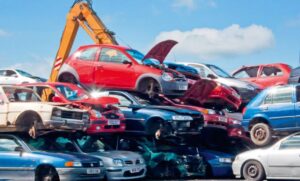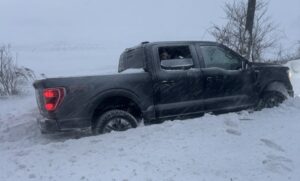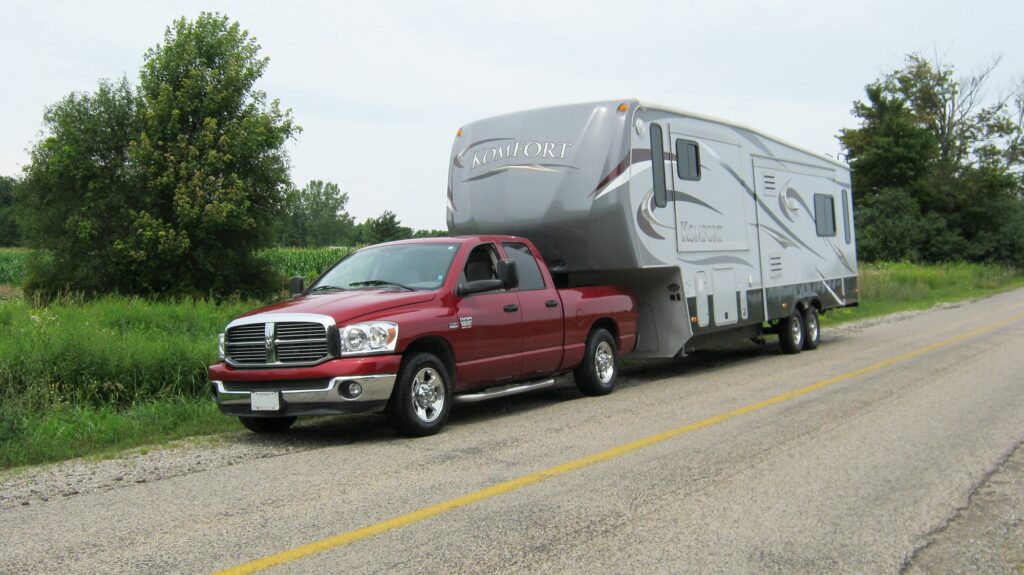In the world of hauling and transport, whether you’re a weekend warrior with a new camper, a seasoned contractor moving equipment, or a professional in the towing services industry like Pars Towing serving the Aurora area and all of Ontario, one decision stands above all others: choosing the right truck for the job.
The right truck is not merely about raw horsepower; it’s a complex equation involving capacity, safety features, engine type, and legal compliance. Selecting the incorrect vehicle can lead to a host of serious problems—from dangerous sway and poor braking performance on Ontario’s highways, to excessive wear and tear on your vehicle, and even legal ramifications for exceeding weight limits.
For residents and businesses in Aurora and the greater Southern Ontario region, where diverse terrain and varying weather conditions are a reality, this choice is even more critical. At Pars Towing, we see firsthand the consequences of mismatched truck-and-trailer combinations, and our goal is to help you avoid them entirely. This comprehensive guide will break down every factor you need to consider, ensuring you make an informed, safe, and efficient investment. By the end of this article, you will be equipped with the knowledge to confidently say, “I am choosing the right truck for my specific needs.”
- Learn More >>>>> Heavy duty towing service
Part I: The Foundation of Towing – Understanding the Numbers
Towing is a science rooted in weight ratings. Before you look at makes, models, or trim packages, you must master the fundamental terminology and calculations. These numbers are non-negotiable safety limits set by the manufacturer.
1. Decoding Towing Terminology
To make an educated decision, you must first understand the alphabet soup of towing ratings found on your vehicle’s sticker (often inside the driver’s side door jamb) and in the owner’s manual.
- Curb Weight (CW): This is the weight of the truck as it sits, including a full tank of fuel and all standard equipment, but excluding passengers, cargo, or the trailer. It is the truck’s baseline weight.
- Payload Capacity (PC): This is the maximum weight the truck can safely carry inside the cab and bed. Crucially, everything counts against the payload: the driver, all passengers, tools, luggage, aftermarket accessories (like a heavy toolbox or tonneau cover), and most importantly, the Tongue Weight of the attached trailer.
- Gross Vehicle Weight Rating (GVWR): The absolute maximum allowable weight of the fully loaded truck itself (Curb Weight + Payload). You must never exceed this number. GVWR=Curb Weight+Maximum Payload
- Tongue Weight (TW) / King Pin Weight (Fifth-Wheel): The downward force exerted by the trailer tongue onto the tow ball (for conventional/bumper-pull) or the king pin (for fifth-wheel/gooseneck). Proper tongue weight is vital for stability and safety, typically falling between 10% to 15% of the Gross Trailer Weight (GTW) for conventional trailers.
- Gross Trailer Weight (GTW): The total weight of the trailer plus all the cargo, fluids, and equipment loaded onto it. This is the figure most people focus on, but it’s only part of the equation.
- Maximum Towing Capacity (MTC): The maximum Gross Trailer Weight (GTW) the manufacturer rates the truck to pull. This number is often advertised, but it’s calculated under specific, often optimal, conditions (e.g., only a light-weight driver, no cargo).
- Gross Combined Weight Rating (GCWR): This is the single most important number. It is the absolute maximum allowable weight of the entire connected rig—the truck and the fully loaded trailer. Your GCWR must always be greater than the total actual weight of your truck (GVW) plus your trailer (GTW). GCWR=Maximum GVWR+Maximum GTW
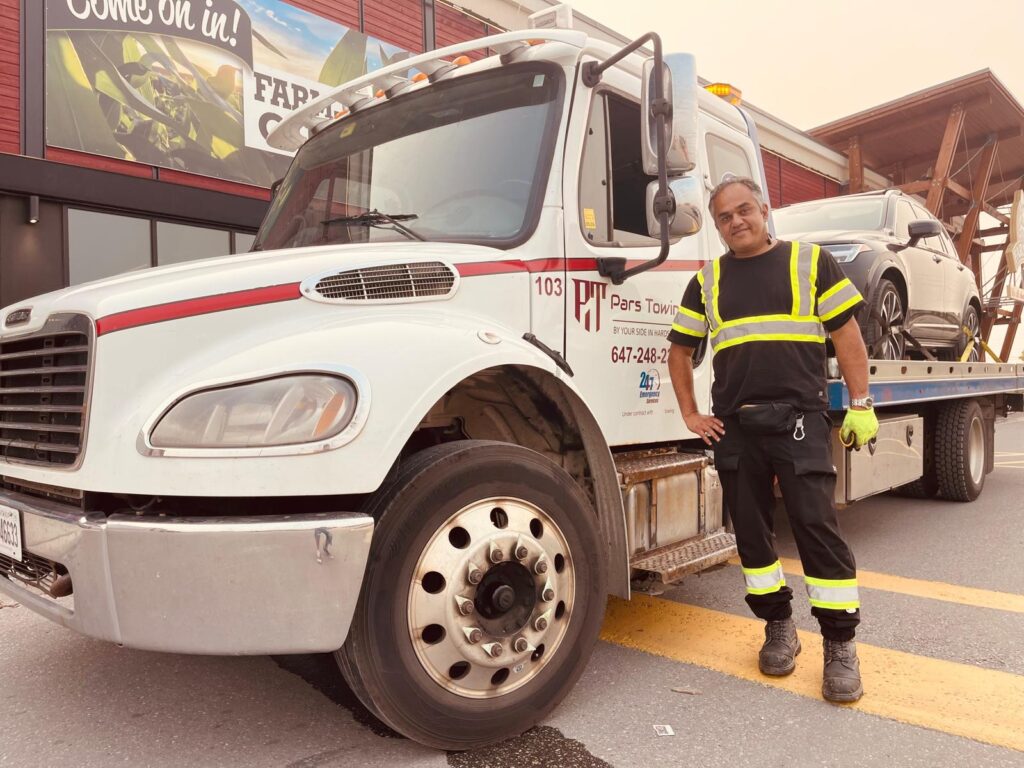
- Learn More >>>>>Medium duty towing service
2. The Golden Rule of Towing Capacity Calculation
The key to safe towing is working backward from your GCWR and ensuring you have an ample safety margin, especially when choosing the right truck. Never buy a truck that can only just tow your load. Experts recommend keeping your actual combined weight to no more than 85% of your GCWR.
The Calculation in Practice:
- Determine Your Actual Load: Weigh your fully loaded trailer (GTW). Add the weight of your passengers, gear, and cargo in the truck.
- Calculate Tongue Weight: Estimate or measure the tongue weight (TW). If your trailer is 10,000 lbs, your TW should be 1,000-1,500 lbs.
- Check Payload: Does your truck’s Payload Capacity (PC) comfortably cover the combined weight of passengers, cargo, and the Tongue Weight? Payload Check=Driver/Passenger Weight+In-Truck Cargo Weight+Tongue Weight<Maximum Payload Capacity
- Check GCWR: Is your Gross Combined Weight (Actual Truck Weight + Actual Trailer Weight) safely under the GCWR? GCWR Check=(Truck Curb Weight+Driver/Passenger/Cargo/TW)+(GTW)<Maximum GCWR
Failing either the Payload Check or the GCWR Check means you are overloaded, which compromises braking, steering, suspension, and driveline components, posing a significant risk. This rigorous calculation is what separates safe towing from a roadside emergency—an emergency Pars Towing in Aurora is equipped to handle, but one we hope you avoid.
Part II: Truck Classification – Light, Medium, and Heavy Duty
The first major decision in choosing the right truck is selecting the correct class. Trucks are broadly categorized by their Gross Vehicle Weight Rating (GVWR). The truck class directly correlates to its structural strength, axle ratings, brake capacity, and engine power, making it the most reliable indicator of its potential towing capability.
1. Light-Duty Trucks (Classes 1-3)
These are the most common pickup trucks on the road and are suitable for personal, moderate towing.
| Class | GVWR Range (approx.) | Typical Examples | Towing Niche |
| 1-2A | Up to 8,500 lbs | Ford Ranger, Chevy Colorado, Toyota Tacoma, Base Ford F-150, Ram 1500 | Small utility trailers, jet skis, small boats, snowmobiles, small campers (pop-ups). |
| 2B-3 | 8,501 to 14,000 lbs | Heavy-duty half-tons (F-150 HDPP), Ford F-250/F-350, Ram 2500/3500, Chevy Silverado/GMC Sierra 2500/3500 (SRW) | Travel trailers, mid-sized boats, horse trailers, utility trailers with heavy equipment. |
Key Takeaway: If your towing needs are occasional and involve loads under 12,000 lbs, a light-duty or “three-quarter-ton” truck (2500/F-250 equivalent) is usually sufficient.
2. Medium-Duty Trucks (Classes 4-6)
These trucks bridge the gap between heavy personal use and light commercial operations.
| Class | GVWR Range (approx.) | Typical Examples | Towing Niche |
| 4-6 | 14,001 to 26,000 lbs | Ford F-450/F-550/F-650 (Chassis Cab), Ram 4500/5500, Commercial Delivery Vans | Gooseneck trailers, heavy fifth-wheel RVs, flatbed/rollback tow trucks (like those used by Pars Towing for smaller commercial vehicles), small buses, large equipment haulers. |
Key Takeaway: These trucks are the workhorses of many small and mid-sized businesses. They offer significantly higher payload and towing capacity (often 20,000+ lbs), making them ideal for serious RVers or contractors.
3. Heavy-Duty Trucks (Classes 7-8)
These are serious commercial vehicles, designed for maximum capacity and are the backbone of professional towing services.
| Class | GVWR Range (approx.) | Typical Examples | Towing Niche |
| 7-8 | 26,001 lbs and up | Semi-trucks, Dump Trucks, Large Fire Trucks, Heavy-Duty Wreckers/Rotators (Pars Towing) | Semi-trailer recovery, heavy machinery transport, large commercial bus towing, major accident recovery. |
- Learn More >>>>> Light duty towing service
Key Takeaway: For the most extreme loads and professional recovery operations—the kind of specialized service Pars Towing provides in Aurora, Ontario—a heavy-duty truck with specialized equipment (rotators, under-reaches, massive boom lifts) is the only option. Your personal towing needs will almost certainly fall into the Light or Medium-Duty classes.
Part III: Essential Components – Engine, Drivetrain, and Frame
Once you’ve identified the appropriate class, the next layer of the decision involves the mechanical heart and structure of the truck.
1. Engine Power: Gas vs. Diesel
The engine is where the pulling power originates, and your choice is primarily between gasoline and diesel.
| Feature | Gasoline Engine | Diesel Engine |
| Torque/Power | Lower torque at low RPM, suitable for light-to-moderate loads. | Significantly higher torque at low RPM—the essential ingredient for heavy, sustained pulling. |
| Fuel Efficiency | Lower MPG, especially when towing. | Better fuel economy when towing and over long distances. |
| Cost | Lower initial purchase price, cheaper maintenance. | Higher initial purchase price, more expensive, specialized maintenance. |
| Longevity | Generally shorter lifespan under constant heavy stress. | Built to last longer and handle sustained heavy-duty work. |
Recommendation: If you tow occasionally or tow light loads (under 8,000 lbs), a modern, high-output gas V8 or turbo V6 is efficient and cost-effective. If you tow heavy loads (over 10,000 lbs) frequently, especially fifth-wheel/gooseneck trailers, the superior torque, better longevity, and improved towing efficiency of a diesel engine make it the clear winner for choosing the right truck.
2. Drivetrain: 2WD vs. 4WD
- Two-Wheel Drive (2WD): Generally offers a slight advantage in payload and towing capacity over an equivalent 4WD model because the 4WD components add weight. It’s perfect for on-road towing.
- Four-Wheel Drive (4WD): An absolute necessity for towing in adverse conditions, like slick boat ramps, muddy construction sites, or the snowy, icy roads common throughout Ontario. While it slightly reduces capacity, the added traction and control offer a vital safety margin that is worth the tradeoff for many, particularly in the Aurora area.
3. Single Rear Wheel (SRW) vs. Dual Rear Wheel (DRW)
Commonly referred to as a “dually,” the Dual Rear Wheel configuration is a game-changer for serious towing.
- DRW (Dually): Features four tires on the rear axle. This significantly increases the Payload Capacity and the stability (resistance to sway). The wider footprint drastically improves handling and safety when towing the heaviest loads, such as large fifth-wheel RVs or heavy equipment trailers.
- SRW (Single Rear Wheel): The standard configuration. It’s more maneuverable and economical for non-towing daily driving.
Recommendation: If you are towing a heavy fifth-wheel or gooseneck trailer frequently, a DRW truck is the safest and most capable option. For conventional towing or lighter fifth-wheels, an SRW is generally adequate.
- Learn More >>>>>Flatbed towing service
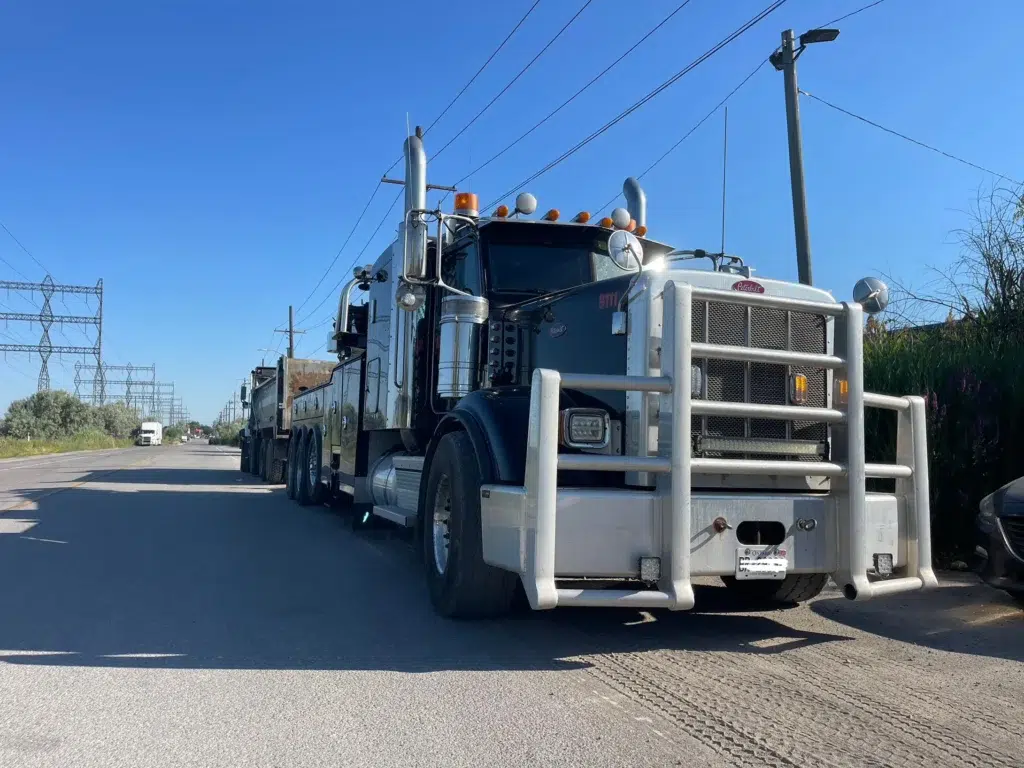
Part IV: The Towing Ecosystem – Hitches, Brakes, and Technology
The truck itself is only half the system. The connection point and the technology that supports the tow are equally crucial for safety and control.
1. Choosing the Right Hitch Class
The hitch must be rated to handle your maximum Gross Trailer Weight (GTW) and Tongue Weight (TW). Exceeding a hitch’s rating is extremely dangerous.
| Hitch Class | GTW Range (approx.) | Typical Application |
| I & II | Up to 3,500 lbs | Passenger cars, light SUVs, small utility trailers. |
| III | Up to 8,000 lbs | Light-duty pickup trucks, full-size SUVs, boat trailers, small travel trailers. |
| IV & V | Up to 17,000 lbs | Heavy-duty pickup trucks (2500/3500), large travel trailers, car hauler trailers. |
| Fifth-Wheel / Gooseneck | 15,000 to 30,000+ lbs | Specialized hitches mounted in the truck bed for maximum stability and capacity. |
Weight Distribution Hitches (WDH): For conventional trailers over 5,000 lbs, a WDH is highly recommended. It uses spring bars to distribute the tongue weight more evenly across all the truck and trailer axles, leveling the vehicle and significantly improving steering, braking, and sway control.
2. Braking Systems: The Non-Negotiable Safety Feature
- Integrated Trailer Brake Controller (ITBC): Essential for any trailer over 3,000 lbs. This allows the driver to control the trailer’s electric or electric-over-hydraulic brakes independently and synchronizes them with the truck’s brakes for safe, smooth stopping.
- Engine Brake / Exhaust Brake (Diesel): A critical feature on diesel trucks that uses the engine’s compression to slow the rig down on steep descents, saving the service brakes from overheating and fading—a vital safety advantage when traversing hilly regions of Ontario.
3. Towing-Specific Technology
- Tow/Haul Mode: A button that changes the transmission shift points, preventing “gear hunting,” holding lower gears longer, and engaging engine braking.
- Trailer Sway Control (TSC): Uses the truck’s anti-lock brake system and stability control to automatically detect and correct trailer sway by applying individual wheel brakes.
- Camera and Monitoring Systems: Modern trucks offer advanced camera views (e.g., trailer-reverse guidance, “invisible trailer” view) and tire pressure monitoring for the trailer, significantly enhancing safety and maneuverability.
Part V: Choosing the Right Truck for Your Specific Towing Application
The ideal truck depends entirely on what you are towing.
1. The Recreational Tows (Boats, Campers, Utility)
- Small Boat/Utility Trailer: A mid-size truck (e.g., Ford Ranger) or a well-equipped light-duty half-ton is usually perfect. Focus on gas mileage for non-towing use.
- Large Travel Trailer (TT): Requires a 3/4-ton (2500-series) or a heavily optioned half-ton with a Max Tow Package. Payload is often the limiting factor for TTs, not Max Tow Capacity.
- Fifth-Wheel RV: Requires a minimum of a 3/4-ton and, for larger models, a 1-ton (3500-series) truck. Payload capacity is paramount, making a DRW a frequent requirement.
2. The Commercial Tows (Contractors, Landscape, Fleet)
- Heavy Equipment: Often requires a 1-ton or a Chassis Cab (Class 4/5) with a gooseneck hitch to haul excavators, dozers, or multiple skid steers.
- Fleet Operations: Durability and maintenance costs become key. Diesel is generally preferred for its longevity and sustained performance under constant load.
3. The Professional Towing Service (Pars Towing’s Fleet)
- Light-Duty Roadside/Accident Recovery: Flatbed (Rollback) tow trucks on a medium-duty chassis (e.g., F-550) or light-duty wreckers for cars, motorcycles, and underground parking calls.
- Medium-Duty Recovery: Integrated or boom wreckers on a Class 5-7 chassis for RVs, box trucks, buses, and commercial vehicles.
- Heavy-Duty Recovery and Accident Scene Management: Rotator and massive boom-style wreckers on a Class 8 chassis, capable of up to 75-tons of recovery power. This is the realm of extreme specialization and engineering.
- Learn More >>>>> Long distance towing service
Conclusion: Partnering with Experience in Aurora, Ontario
Choosing the right truck is a significant investment and a decision that impacts your safety, wallet, and peace of mind. By prioritizing the safety ratings—especially the GCWR and Payload Capacity—and matching the truck class and features to your specific towing demands, you can ensure your rig performs reliably and safely, whether you’re heading north to cottage country or navigating the busy streets of Aurora, Ontario.
Remember, even the best-equipped truck can encounter the unexpected. When mechanical failure, an accident, or any roadside emergency leaves you stranded, you need a partner with the right equipment and expertise. Pars Towing has built a reputation in the Aurora and greater Ontario area for fast, reliable, and professional towing and recovery services. From light-duty flatbeds for your family car to heavy-duty wreckers for commercial vehicles, we have the diverse, specialized fleet to handle any situation, ensuring your vehicle is transported safely and efficiently.
Make the right choice today for a lifetime of confident hauling. And for the days when things don’t go as planned, know that Pars Towing is just a call away, ready to deploy the right truck for your needs.

